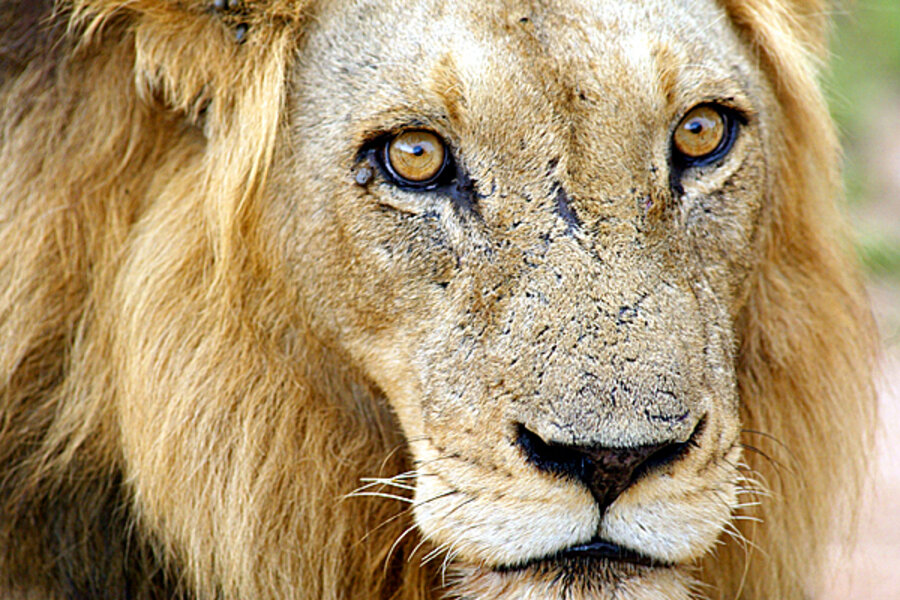South Africa lions: Global financial crisis may starve lions
Loading...
| Johnannesburg, South Africa
After running wild through the world's concrete jungles, the financial crisis now stalks the South African savanna and one of the world's most beloved predators (South Africa lions) could become its prey.
The cash crunch could force a South African game reserve to euthanize 16 lions as their funds for lion food run out.
SanWild Wildlife Rehabilitation Center and Sanctuary, in the rural northern state of Limpopo, has issued an urgent funding appeal to help keep up with 45,000 rand ($6,160) monthly meat bills to feed 14 lions and two cubs. Most of the lions had been rescued from South Africa’s lucrative “canned hunt” industry, in which hunters pay large fees to shoot wild animals in relatively small enclosures.
VIDEO: Standing up for Congo's rare mountain gorillas
“If we really have a problem with getting funding, we will have to euthanize the animals,” says SanWild’s founder and trustee, Louise Joubert, in a phone interview. Funding has been difficult for most of 2009, Ms. Joubert says, a sign that the economic crisis is discouraging potential donors from giving to animal causes such as SanWild. “We had a substantial drop in 2009, and the economic crisis had a big impact. People wrongly assume that only the large donations matter. But it’s small donations that have kept us going all this time.”
SanWild took in the lions in 2003, after the South African state of Limpopo confiscated the lions from illegal breeding and canned-hunting operations, and handed them to SanWild to care for them. SanWild agreed on the condition that the state help to pay for their upkeep, but after one payment, Limpopo’s payments stopped. SanWild has lived on donations ever since, to the tune of some 650,000 rand per year ($88,356). Each adult lion consumes 5 kilograms of meat a day.
“I think everybody is having more stressful times now, because of the economic crisis,” says Annie Beckhelling, founder of Cheetah Outreach, a cheetah conservation group in Stellenbosch. “Funding is especially difficult to get at the moment, especially in places like Africa, where the sustainable industry is tourism, and where the big draw for that tourism is our big cats.”
Kenya has had similar difficulty keeping its lions alive, but for different reasons. In the Amboseli National Park, a drought has wiped out much of the wild lion’s food source, forcing the big cats to move in on the private livestock herds in nearby villages. In response, Kenya has trucked in thousands of zebra and wildebeest, a temporary but expensive measure.
--- Follow me on Twitter.





